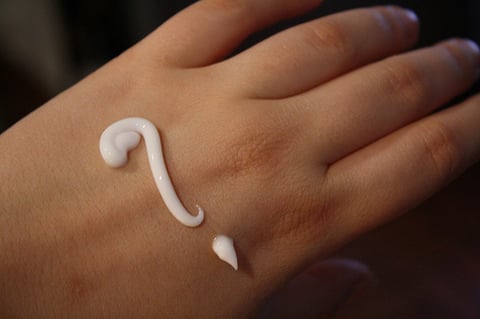
Many of the ingredients found in our personal care products are actually causing hormone imbalances in our body. Certain ingredients can alter hormonal chemistry in a couple of ways. They can increase circulation of certain hormones by mimicking their activity in the body, or they can reduce the level of sex hormones in the body or block their activity.
Americans are currently suffering from low energy levels, PMS, mood swings, anxiety, and depression more than ever before. All hormone related conditions that rarely existed 100 years ago. Perhaps it is because we are using more chemicals on our body then ever before in history.
Numerous other countries have taken notice of the side effects of these ingredients and have outright banned them. Scary to say that America is NOT one of those countries taking care, and we are constantly producing these toxins in almost all mainstream products.
The following ingredients have been shown to have a toxic effect on the body that may manifest in unusual ways from hormone imbalance, to brain cell damage, to caner. Some have even become illegal or not proven safe in other countries, and you may be filling your blood stream with them every single day.
Toxic Ingredients Found in Your Personal Care Products
1 . Parabens
- Parabens are preservative in lotions, shampoos and all kinds of other cosmetics
- After intricate testing, Denmark first made the decision to ban all parabens in products made for young children in 2010.
- Parabens are known to disrupt hormone function, which is linked to an increased risk of breast cancer and Infertility.
- Parabens mimic estrogen by binding to estrogen receptors on cells.
- Parabens are absorbed into the bloodstream and have been shown to lead to hormonal disruption.
2. Fluoride
- Found in toothpaste and tap water!
- Fluoride is an endocrine disruptor- leading to thyroid issues, autoimmune disease, infertility, and mood disorders.
- According to the National Institutes of Health, “Research shows that endocrine disruptors may pose the greatest risk during prenatal and early postnatal development when organ and neural systems are forming.”
- New IQ Studies have been done that Link Fluorosis to Neurotoxicity (killing brain cells)
3. Phthalates
- Phthalates work as softeners in personal care products such as cosmetics and shampoo, as well as flexible plastics like children’s toys.
- Phthalates are known as endocrine disruptors because they mimic the body’s hormones and have been shown to cause reproductive and neurological damage.
- Phthalates are in products with “Fragrance” as one of the ingredients.
4. DEA (diethanolamine), MEA (Monoethanolamine) & TEA (triethanolamine):
- These ingredients are Hormone-disrupting chemicals that can form cancer-causing nitrates and nitrosamines. These chemicals are already restricted in Europe due to known carcinogenic effects. In the United States however, they are still used despite the fact that Americans may be exposed to them 10-20 times per day with products such as shampoos, shaving creams and bubble baths.
- Dr. Samuel Epstein (Professor of Environmental Health at the University of Illinois) says that repeated skin applications…. of DEA-based detergents resulted in major increase in incidence of liver and kidney cancer. The FDA’s John Bailey says this is especially important since “the risk equation changes significantly for children”.
5. DMDM Hydantion & Urea (Imidazolidinyl):
- Just two of many preservatives that often release formaldehyde which may cause joint pain, skin reactions, allergies, depression, headaches, chest pains, ear infections, chronic fatigue, dizziness, and loss of sleep.
- Exposure may also irritate the respiratory system, trigger heart palpitations or asthma, and aggravate coughs and colds. Has also been shown to weaken the immune system and cancer.
6. Fragrances:
- Fragrance is what makes your lotion, perfume, deodorant and shampoo “smell good”. You’ll see it at the bottom of the ingredients list as “fragrance” or “parfum”.
- Fragrances can contain neurotoxins (meaning kills brains cells) and are among the top five allergens in the world.
- Toluene which is in fragrances is known neurotoxin that causes loss of muscle control, brain damage, headaches, memory loss, and problems with speech, hearing, and vision.
7. Polyethylene Glycol (PEG) Propylene Glycol (PG) and Butylene Glycol:
- Main ingredient in antifreeze!
- Has been linked to kidney and liver disease.
- Used in cleansers to dissolve oil and grease.
- The Material Safety Data Sheet (MSDS) cites skin, liver and kidney damage that can result from contact with PG, and it gives safe handling instructions, calling it a hazardous substance.
8. Sodium Lauryl Sulfate (SLS) & Sodium Laureth Sulfate (SLES):
- Used in car washes, garage floor cleaners and engine degreasers – and in 90% of personal-care products that foam.
- Animals exposed to SLS experience eye damage, depression, labored breathing, diarrhea, severe skin irritation, and even death. Young eyes may not develop properly if exposed to SLS because proteins are dissolved.
- SLS may also damage the skins immune system by causing layers to separate and inflame. When combined with other chemicals, SLS can be transformed into nitrosamines, a potent class of carcinogens(cancer causing agents)
- Your body may retain the SLS for up to five days, during which tie it may enter and maintain residual levels in the heart, liver, the lungs, and the brain.
9. Triclosan:
- A synthetic “antibacterial” ingredient – with a chemical structure similar to Agent Orange! The EPA registers it as a pesticide, giving it high scores as a risk to both human health and the environment.
- It is classified as a chlorophenol, a class of chemicals suspected of causing cancer in humans.
- Its manufacturing process may produce dioxin, a powerful hormone-disrupting chemical with toxic effects measured in the parts per trillion; that is only one drop in 300 Olympic-size swimming pools!
- Hormone disruptors pose enormous long-term chronic health risks by interfering with the way hormones perform, such as changing genetic material, decreasing fertility and sexual function, and fostering birth defects.





No Comment